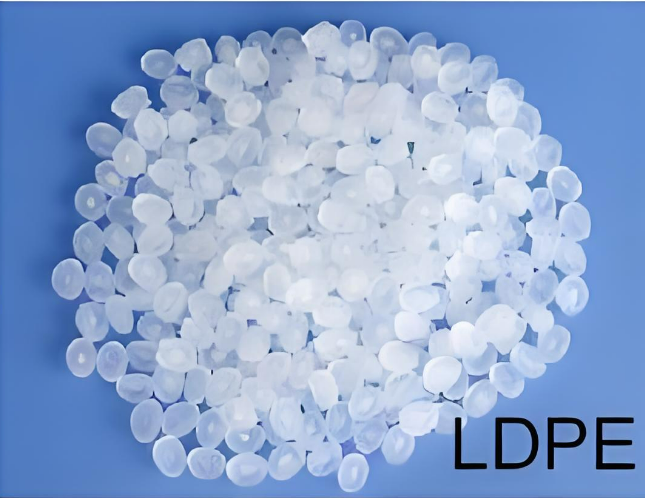Time to read: 6 min

What is Low Density Polyethylene (LDPE)?
Low density polyethylene, often abbreviated as LDPE, is a thermoplastic belonging to the polyethylene family. It is composed of long chains of ethylene molecules, with the chemical formula (C2H4)n, shared with high-density polyethylene. Despite the similar chemical composition, LDPE and HDPE differ in density and, consequently, in their physical properties. LDPE is known for its flexibility and transparency, making it a popular choice for a variety of plastic products.
Manufacturing Process of Low Density Polyethylene
The production of LDPE involves a radical polymerization process under extreme heat—up to 570 degrees Kelvin—and high pressure—up to 3,000 atm. The process begins with breaking down petroleum-based raw materials into smaller molecules. Ethylene gas is then separated and introduced into a reactor where it reacts with an initiator, such as oxygen or organic peroxide, to start the polymerization.
Applications of Low Density Polyethylene
LDPE's combination of stretchability and strength makes it ideal for applications requiring flexibility and the ability to hold weight without breaking. Common uses for LDPE include:
- Grocery bags
- Six-pack rings for beverages
- Juice containers
- Cling films and other food packaging
- Trays for food service
- Tubing for various industrial applications
- Prosthetics in the medical field
- Ice cream lids
- Laminates in construction
Advantages of Low Density Polyethylene
LDPE offers several benefits that make it a preferred material for many applications:
- Flexibility: LDPE's low crystallinity allows it to bend and stretch without cracking.
- Moisture Resistance: It effectively repels water and moisture, making it suitable for food packaging.
- Chemical Resistance: LDPE does not break down when exposed to various chemicals, offering durability in industrial applications.
- Cost-Effectiveness: It is relatively inexpensive to produce, which contributes to its widespread use.
Disadvantages of Low Density Polyethylene
Despite its many advantages, there are also some considerations when using LDPE:
- Lower Strength: It may crack under heavy loads, indicating a limitation in strength compared to some other plastics.
- Temperature Limitations: LDPE begins to melt at temperatures above 221 degrees Fahrenheit, limiting its high-temperature applications.
- High Gas Permeability: It allows gases like carbon dioxide to pass through, which can be a disadvantage in certain packaging applications.
- Poor UV Resistance: Prolonged exposure to UV rays can cause LDPE to degrade, affecting its shape and color.
- Recycling Challenges: While recyclable, LDPE requires proper sorting and processing, especially for flexible items like cling film.
Low Density Polyethylene vs. High Density Polyethylene
While both LDPE and HDPE are types of polyethylene, they have distinct properties. LDPE's molecular structure is looser, granting it flexibility, whereas HDPE has a tighter molecular structure, making it stronger and more durable.
Summary
Understanding the properties and applications of low density polyethylene is crucial for selecting the right material for your manufacturing needs. UnoFactory offers a comprehensive range of manufacturing services, including the use of LDPE in injection molding and other processes. For more information or to get an instant quote, contact UnoFactory today.




